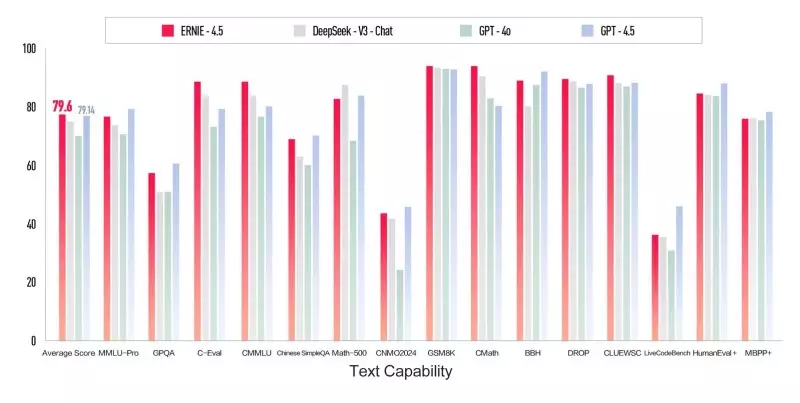In a bold move over the recent weekend, Baidu, the Chinese titan of internet search, unveiled its latest AI innovations—ERNIE 4.5 and ERNIE X1. These ambitious models, boasting multimodal capabilities and advanced reasoning, claim to surpass competitors like OpenAI’s GPT-4.5 and DeepSeek’s V3 across various benchmarking tests. What makes this launch particularly intriguing is Baidu’s marketing approach, especially with the closely mirrored nomenclature of its models to those of its main rivals—a strategic choice that underscores its intent to rival these giants head-on.
The introduction of ERNIE 4.5 is positioned as a groundbreaking development in the realm of natural language processing. Baidu asserts that this model excels in areas of comprehension, generation, and logical reasoning—key components that impact AI’s practicality in real-world applications. The company aims to redefine what is plausible in AI affordably, pricing ERNIE 4.5 at a mere fraction of the cost of GPT-4.5.
Technological Innovations at the Core
The technological fabric of ERNIE 4.5 is woven from several cutting-edge advancements, including FlashMask Dynamic Attention Masking and a novel approach to multimodal mixing. These innovations enable the system not only to process textual information but also to grasp images, audio, and video content effectively. This capability resonates well within the contemporary framework of digital interactions where diverse media formats are staple elements. However, a notable drawback persists—the limited context window of 8,000 tokens. This is a stark contrast to the extensive 128,000 tokens offered by GPT-4.5, raising concerns about its utility outside basic applications such as customer service interactions.
Baidu aims to address this limitation eventually, signaling plans for full open-source availability by the mid-2025 mark. This delayed release could hinder enterprises wanting to explore the robustness and versatility of ERNIE in the interim. In particular, the restricted context may curtail its practicality across more complex operations, as pointed out by technology commentators highlighting its suitability predominantly for customer-facing solutions.
Comprehensive Capabilities of ERNIE X1
On the other hand, ERNIE X1 extends Baidu’s ambitions beyond simple language processing into the territory of deep reasoning and complex task execution. Positioned as a reasoning-specific model, ERNIE X1 touts capabilities that target advanced understanding, planning, and reflection. This focus on reasoning not only allows the model to engage in advanced information retrieval tasks but also serves enterprise needs through features like document-based question and answer sessions or even AI-driven code execution.
The architecture of ERNIE X1 incorporates Progressive Reinforcement Learning coupled with a unified multi-faceted reward system, suggesting that it learns and adapts over time to improving performance through iterative feedback. This represents a significant stride toward nuanced AI interactions that require complexity in thought processes—areas where typical models have fallen short.
Catering to Enterprise Needs
Baidu certainly seems to recognize the imperative for businesses, particularly those operating within the Chinese market, to leverage AI technologies effectively. With both ERNIE models integrated into the ecosystem of Baidu’s services, companies could experience notable efficiency boosts through optimized workflows and enhanced customer interactions. The pricing structure set forth underlines Baidu’s understanding of cost-sensitive business environments, offering competitive rates that may lure companies away from pricier alternatives.
Considerations surrounding data privacy and compliance remain critical, particularly given the broader concerns regarding AI oversight and regulation. Baidu’s roadmap suggests a commitment to responsible AI deployment, although enterprises must remain vigilant about understanding the implications of utilizing these models.
Broader Impacts on the AI Industry
As we progress deeper into 2025, it’s evident that Baidu’s innovations in the AI sector can potentially disrupt existing market dynamics. Their determination to present a cost-effective yet powerful suite of tools invites discussions around the ethics and responsibilities of AI technology, especially in terms of how it influences enterprise decisions and consumer experiences.
The push for localized AI models further accentuates the need for nuanced understanding of cultural context and language, especially in regions where English-language models fall short. Baidu’s continued investment in underlying infrastructure and foundational AI capabilities illustrates a clear vision for the future of AI model deployment, potentially setting the stage for competitive advantage within the burgeoning landscape of AI applications.
In this rapidly evolving environment, the advent of Baidu’s ERNIE 4.5 and X1 models could signal a paradigm shift for businesses willing to embrace the next generation of AI-driven solutions. As companies navigate through these technological advances, the dialogue around AI’s role in society will undoubtedly continue to evolve, challenging our perceptions of intelligence and interaction in the digital age.


Leave a Reply
You must be logged in to post a comment.